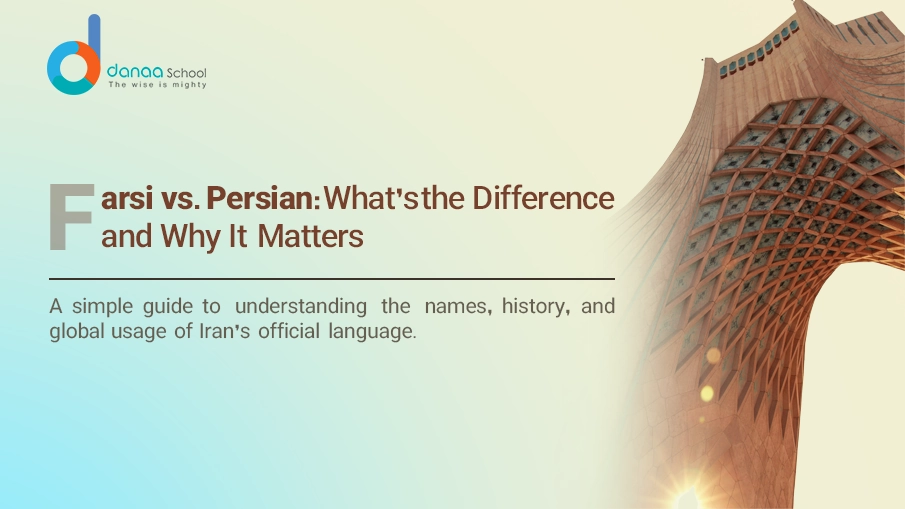Is Farsi the Same as Persian?
Understanding language can be a tricky subject, especially when it comes to languages like Farsi and Persian. A common question is, “Is Farsi the same as Persian?” To clarify, Farsi and Persian are indeed the same language, but some nuances make the distinction a bit more complex.
In this article, we will explore the differences between Farsi, Persian, and Dari, their geographic distribution, their relationship to Arabic, and much more. If you’re eager to learn more about the Persian language, keep reading to find out the details that will help you understand this fascinating language.
Persian vs Farsi vs Dari
The terms “Farsi,” “Persian,” and “Dari” are often used interchangeably, but there are subtle differences between them. Here’s a breakdown:
- Persian is the name of the English language, and it is derived from “Persis,” an ancient region in Iran. Persian has a rich literary tradition and is the language of poets like Rumi, Hafez, and Omar Khayyam. It’s also known for its role in history and culture throughout the Middle East and Central Asia.
- Farsi: Farsi is the name for Persian as it is spoken in Iran. It is a term used by native speakers of the language in Iran, and it has become the popular term in the West for the language. While it refers to the same language as Persian, “Farsi” is a more localized term and is used primarily in Iran.
- Dari: Dari is a dialect of the Persian language spoken primarily in Afghanistan. It shares many similarities with both Persian and Farsi but has its unique features, vocabulary, and pronunciation. Dari is often considered a “literary” form of Persian in Afghanistan and is one of the country’s two official languages.
While Farsi, Persian, and Dari are essentially the same language, regional variations exist, making them distinct in accent, pronunciation, and some vocabulary.
Where is Farsi Spoken?
Farsi is spoken predominantly in Iran, where it is the official language. However, its reach extends far beyond the borders of Iran. Here are some of the key places where Farsi is spoken:
- Iran: As the native tongue of Iran, Farsi (or Persian) is used by nearly 80 million people. It serves as the lingua franca in both urban and rural areas.
- Afghanistan: Farsi is known as Dari and is spoken by a large portion of the population in Afghanistan. The distinction between Dari and Farsi is mostly a matter of dialect, with minor differences in pronunciation and vocabulary.
- Tajikistan: In Tajikistan, the language is called Tajik. While it is essentially the same as Persian, it uses the Cyrillic script instead. The vocabulary and grammar are identical primarily to Farsi and Dari.
- Parts of Pakistan: Farsi is also spoken by smaller communities in Pakistan, especially in the regions bordering Iran and Afghanistan.
- Diaspora Communities: Farsi-speaking communities can be found worldwide, especially in countries with large Iranian, Afghan, and Tajik diasporas such as the United States, Canada, Germany, and the United Kingdom.
Overall, Farsi is spoken by over 100 million people globally, and it serves as an essential cultural bridge for many regions in the Middle East, Central Asia, and beyond.
Farsi vs Arabic
Although Farsi and Arabic are often confused due to their geographic proximity, cultural exchange, and shared script (the Arabic script is used for both languages), they are distinct languages with many differences:
- Language Family: Farsi belongs to the Indo-Iranian branch of the Indo-European language family, while Arabic belongs to the Semitic branch of the Afro-Asiatic language family. This means that Farsi and Arabic have entirely different roots, structure, and grammar.
- Alphabet: While both languages use the Arabic script, Farsi includes additional letters to accommodate sounds that are not present in Arabic. For instance, Farsi has four extra letters: پ (pe), چ (che), ژ (zhe), and گ (gaf).
- Pronunciation: Farsi pronunciation is quite different from Arabic. For example, while both languages share some vocabulary, their pronunciation and intonation patterns differ greatly.
- Grammar: Farsi grammar is simpler than Arabic grammar. For instance, Farsi does not have grammatical gender or a case system like Arabic. This makes Farsi easier to learn for speakers of languages like English or Spanish.
- Vocabulary: Farsi and Arabic have many loanwords in common, especially in literature, science, and religion. However, most Farsi vocabulary is derived from Old Persian, whereas Arabic vocabulary is more influenced by Semitic languages.
In summary, Farsi and Arabic are two separate languages with different linguistic roots, although they share some similarities due to historical interactions.
Persian Language
The Persian language, or Farsi, has a long and storied history. It is one of the oldest languages still spoken today and has evolved over thousands of years. Persian literature is world-renowned, with classical poets like Hafez, Saadi, and Rumi being some of the most celebrated figures in world literature.
Historically, Persian served as the language of the courts, administration, and culture in several empires, including the Achaemenid Empire, the Sassanid Empire, and later the Safavid Empire. It was also the lingua franca of many parts of Central Asia and the Indian subcontinent.
Persian is written from right to left, and it uses the Arabic-based script, though, as mentioned earlier, it includes additional letters. The Persian script has a rich artistic tradition and has been used for centuries in calligraphy, religious texts, and poetry.
Today, Persian is spoken by over 100 million people and remains a key language in the Middle East, Central Asia, and the Indian subcontinent.
Why Should You Learn Farsi?
Learning Farsi can open doors to an entirely new cultural world. Whether you’re interested in Persian poetry, history, or politics, knowing Farsi allows you to connect with a rich tradition that spans millennia. Additionally, Farsi is a gateway to understanding several dialects, including Dari and Tajik.
If you’re considering learning Farsi, you’re in luck! Danaa School offers a comprehensive Farsi language program, perfect for beginners and advanced learners. Whether you’re planning to travel to Iran, Afghanistan, or Tajikistan or simply wish to explore the Persian language from your home, Danaa School provides excellent resources for mastering Farsi.
FAQs
Is Farsi the same as Persian?
Yes, Farsi and Persian refer to the same language. Farsi is simply the name used by native speakers in Iran, while Persian is the English term for the language.
Where is Farsi spoken?
Farsi is spoken mainly in Iran, Afghanistan (where it’s called Dari), and Tajikistan (where it’s called Tajik). There are also Farsi-speaking communities in other parts of the world, particularly in countries with large Iranian, Afghan, and Tajik diasporas.
What is the difference between Farsi and Dari?
Farsi and Dari are two dialects of the Persian language. The main differences are in pronunciation and vocabulary, though they are mutually intelligible.
Is Farsi similar to Arabic?
While Farsi and Arabic share the same script, they belong to different language families and have very different grammar, vocabulary, and pronunciation.
How hard is it to learn Farsi?
Farsi is considered relatively easy to learn for English speakers compared to other languages in the region. It has simple grammar, no gender, and no case system, which makes it easier to master.
Why should I learn Farsi?
Learning Farsi gives you access to a rich cultural heritage, including classical Persian literature, poetry, and art. It also provides an understanding of the history and politics of Iran, Afghanistan, and Tajikistan.
Conclusion
In conclusion, while Farsi, Persian, and Dari are often used interchangeably, they refer to variations of the same language, each with its unique regional and cultural influences. Learning Farsi opens up opportunities to explore Persian culture, history, and literature. Join us to learn Farsi with Danaa School.
Whether you’re planning to travel or simply wish to deepen your understanding of this beautiful language, Danaa School offers expert-led courses to guide you through every step. Start your journey today and unlock the door to a new language and culture!







